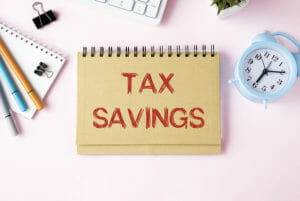Tax Laws & Partnerships: How You Structure Your Business Matters
Are you in a partnership and wondering whether the obligation to pay taxes falls on the individual, i.e. the partner, or the entity, i.e., the partnership?
This question often comes up because the business structure that you operate in—be it a corporation, trust, or partnership—imply different tax rules with respect to who or what pays the taxes, how to report income, and how to treat capital gains and losses arising from the structure.
This article will focus on the partnership structure. According to the CRA, a partnership is defined as follows:
A partnership is an association or relationship between two or more individuals, corporations, trusts, or partnerships that join together to carry on a trade or business with a view to generating a profit.

A partnership can be formed between individuals, corporations, trusts, or other partnerships, in any combination. Partnerships can be formed verbally or by a written contract.
Each partner contributes money, labour, property, or skills to the partnership. In return, each partner is entitled to a share of the profits or losses of the business. The business profits (or losses) are usually divided among the partners based on the partnership agreement.
Does a partnership or a partner file taxes?
Unlike a corporation, which has a distinct legal existence from its shareholders, a partnership does not have this type of separate and distinct legal existence from its partners.
Therefore, a partnership does not file an income tax return or pay taxes on the income generated from the results of their operation; rather, each partner files a separate personal, corporate, or trust income tax return, reporting his/her partnership income and losses. The requirement for each partner to report his/her share of the partnership’s net income is the same whether the share of income was received in cash or as a credit to one of the partnership’s capital accounts.
Does every partnership file a Statement of Partnership Income (T5013)?
Any partnership, other than a farm partnership, that carries on a business in Canada or a Canadian partnership with Canadian or foreign operations or investment, must file a T5013 Statement of Partnership Income if any of the following applies:
- at the end of the fiscal period, the partnership has an absolute value of revenues plus an absolute value of expenses of more than $2 million* or has more than $5 million** in assets.
- at any time during the fiscal period:
- the partnership is a tiered partnership (has another partnership as a partner or is itself a partner in another partnership)
- the partnership has a corporation or a trust as a partner
- the partnership invested in flow-through shares of a principal-business corporation that incurred Canadian resource expenses and renounced those expenses to the partnership
- the Minister of National Revenue asked in writing for a completed form T5013, Statement of Partnership Income
*To determine if a partnership exceeds the $2 million threshold, add total expenses to total revenues rather than subtract expenses from revenues as you would to determine net income.
**The cost figure of all assets worldwide, both tangible and intangible, without taking into account the depreciated amount should be used to determine whether a partnership meets the “more than $5 million in assets” criterion.
Please click here to see instructions for filling out your statement of Partnership Income.
How are partnership losses treated?
A partnership can have a loss; however, the loss carry-over rules are applied to each partner, and not to the partnership. For example, when you complete your own income tax return, combine your share of the partnership non-capital losses with any other non-capital losses you have in the year. Apply this amount against your Income. The loss carry-forward period is 20 years for non-capital losses.
Who claims a capital cost allowance (CCA) inside a partnership?
When a partnership owns depreciable property, it is the partnership that can claim the capital cost allowance, which it does on behalf of the partners. From the capital cost of depreciable property, subtract any investment tax credit allocated to the individual partners. The CCA will be deducted from either the business or professional income reported on the partner’s T5013.
If a property that is sold generates a capital gain, this is income of the partnership; conversely, if there is a capital loss from the sale of property, this loss will belong to the partnership.
If you are in a partnership, it is important to understand what the tax implications are and how these differ from a corporation. Contact a lawyer at Kalfa Law Firm today to discuss how the business structure of your operation affects your tax obligations and your bottom line.
You work hard for your money. We work hard for you to keep it ™.
-Shira Kalfa, BA, JD, Partner and Founder
Shira Kalfa is the founding partner of Kalfa Law Firm. Shira’s practice is focused in corporate-commercial and tax law including corporate reorganizations, corporate restructuring, mergers and acquisitions, commercial financing, secured lending and transactional law. Shira graduated from York University achieving the highest academic accolade of Summa Cum Laude in 2012. She graduated from Western Law in 2015, with a specialization in business law. Shira is licensed to practice by the Law Society of Ontario. She is also a member of the Ontario Bar Association, the Canadian Tax Foundation, Women’s Law Association of Ontario, and the Toronto Jewish Law Society.
© Kalfa Law Firm 2019
The above provides information of a general nature only. This does not constitute legal advice. All transactions or circumstances vary, and specified legal advice is required to meet your particular needs. If you have a legal question you should consult with a lawyer.














